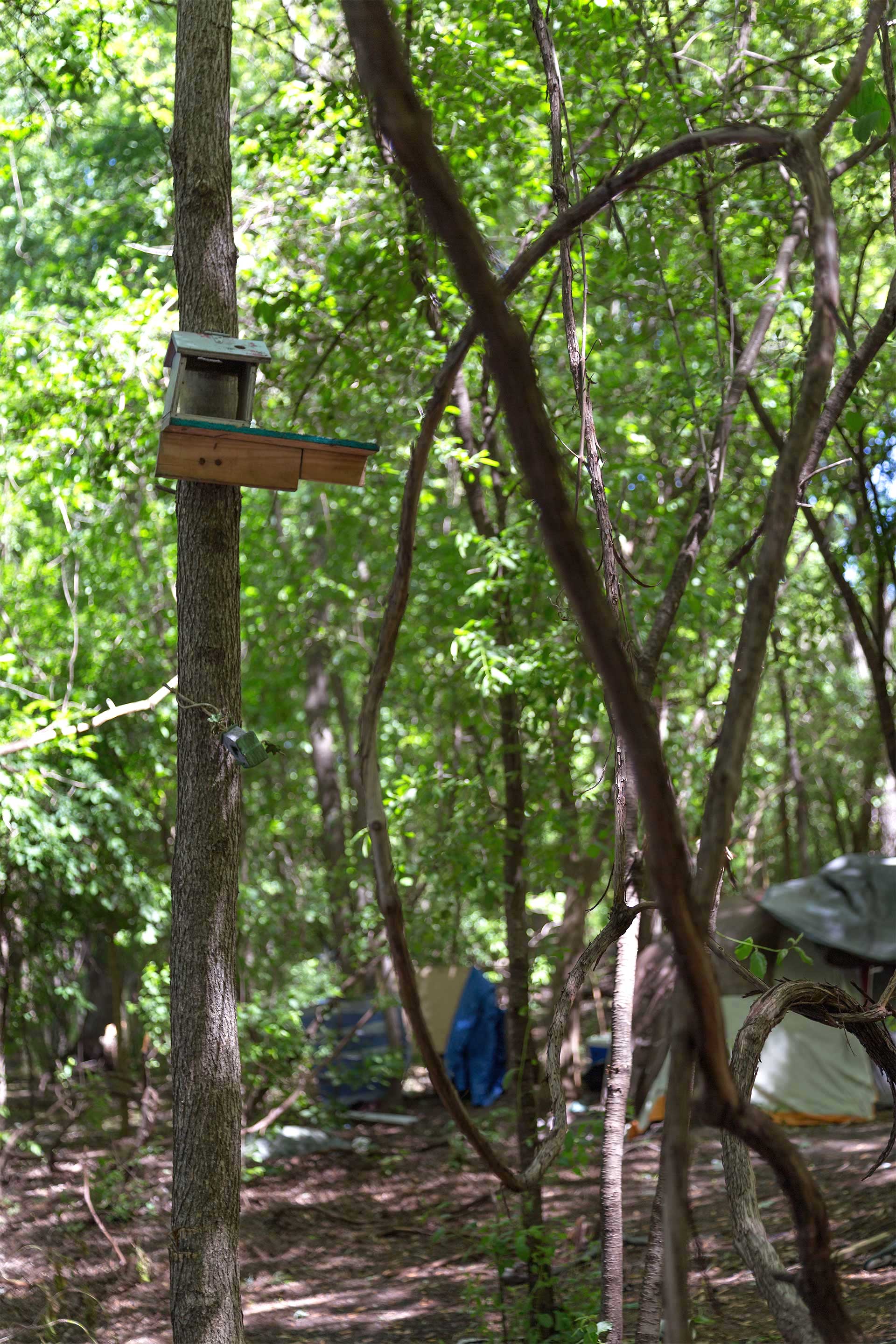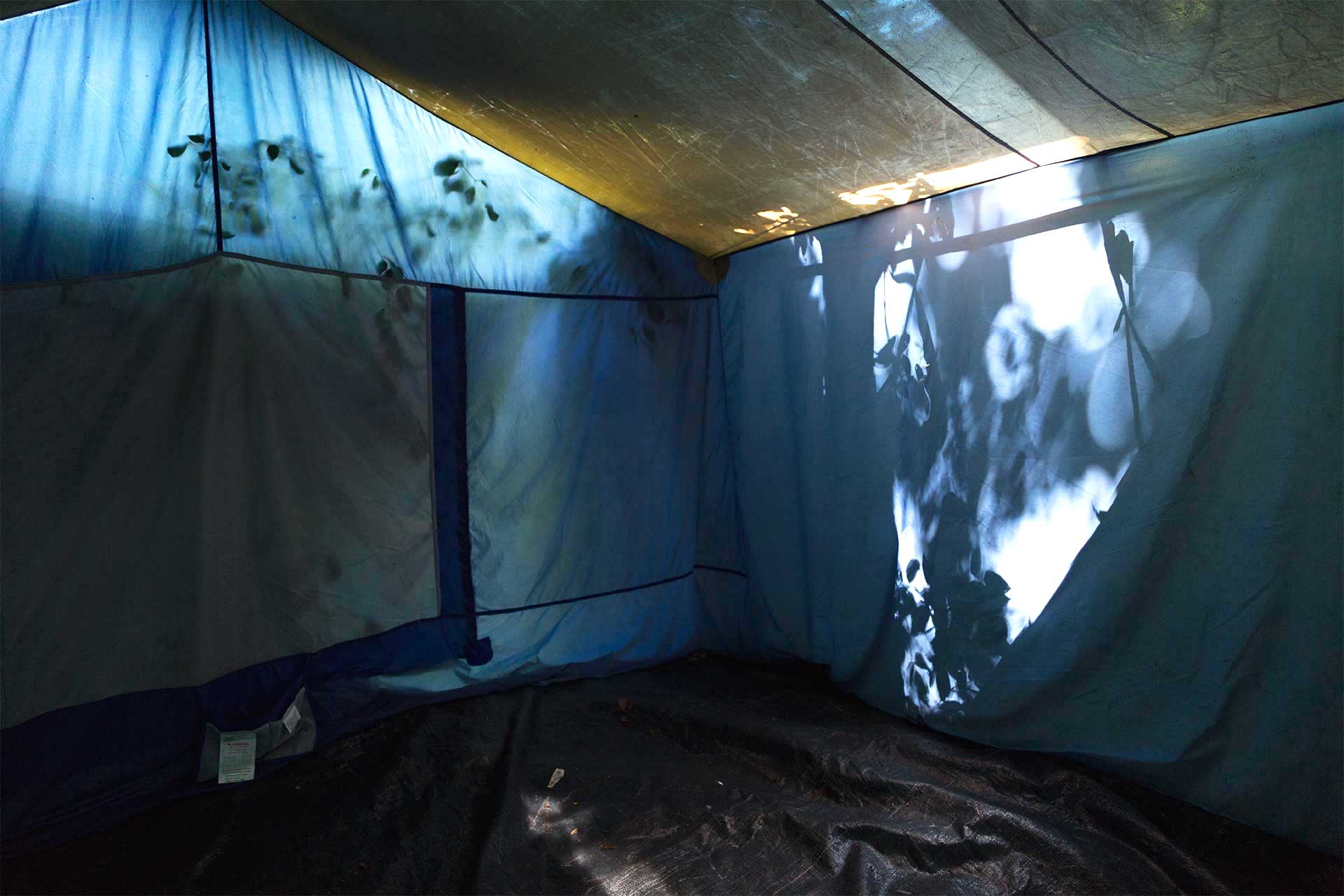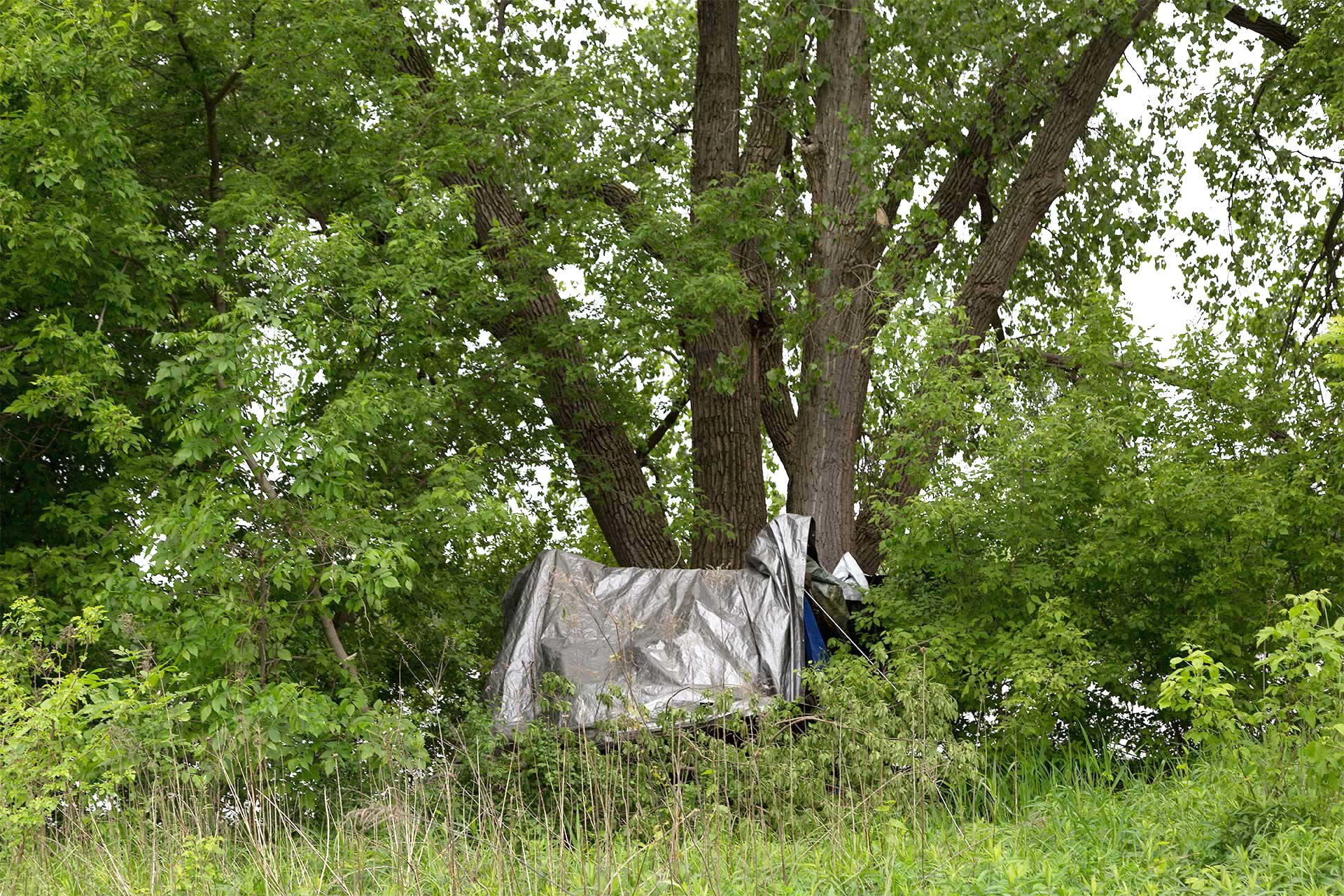Posted 1:45 p.m. Thursday, April 12, 2018

Photography exhibit captures final days of La Crosse’s Tent City.
Photography exhibit captures final days of La Crosse’s Tent City
As La Crosse’s former Tent City came down, several people were at the homeless encampment — capturing its history. Through photos and interviews, members of La Crosse’s Homelessness and Art Committee documented the people and place in its final days on the banks of the Mississippi River in La Crosse. La Crosse’s Collaborative to End Homelessness, along with the City of La Crosse and many partner agencies worked to dismantle Tent City in an effort to end homelessness in summer 2017. Now an exhibit of those photos, as well as paintings and kites made by two formerly homeless people, will be on display at the La Crosse County Administrative Building through Saturday, June16. The exhibit is free. A reception is planned from 4:30-6 p.m. Friday, April 27, at the La Crosse County Administrative Building, 212 6th St. N., La Crosse. Linda Levinson, UW-La Crosse associate professor of art, and Art Karbowski, Western Technical College welding instructor and artist, took the photos. Matt Cashion, UWL professor of English, interviewed people living in Tent City. “Photography is an art of vestiges; it is sensitive to departures and to the ghosts of the waning present and of the presence of absence,” writes Levinson in her artist statement. “I gathered up the images that the bulldozers could not efface.” From the perspective of Couleecap, an agency that provides housing and supports those moving out of homelessness, the exhibit is an opportunity to challenge stereotypes, says Kim Cable, director of the Housing & Community Services Department for Couleecap. “This exhibit allows those who have experienced homelessness an opportunity to express themselves in a way that brings value and understanding to their experiences as people — not as people who are homeless, but as people who have had real life experiences that shape how they express themselves,” explains Cable. [caption id="attachment_51726" align="alignnone" width="1920"] Photo by Linda Levinson[/caption]
The idea to document the takedown of Tent City came from a La Crosse Homelessness and Art Committee, which formed in spring 2017. The group aims to increase awareness of homelessness in the city, something most residents see only from their car window, says Barry McKnight, chair of the committee. “This exhibit really puts a more personal face on this issue,” he says.
During his interviews, Cashion heard many personal stories that shatter the stereotypes culture frequently applies to the homeless. “These were stories revealing the intelligence and dignity of people who are eager to help themselves and to contribute to their communities,” says Cashion. “There are many unheard stories still to tell.”
[caption id="attachment_51728" align="alignnone" width="1920"]
Photo by Linda Levinson[/caption]
The idea to document the takedown of Tent City came from a La Crosse Homelessness and Art Committee, which formed in spring 2017. The group aims to increase awareness of homelessness in the city, something most residents see only from their car window, says Barry McKnight, chair of the committee. “This exhibit really puts a more personal face on this issue,” he says.
During his interviews, Cashion heard many personal stories that shatter the stereotypes culture frequently applies to the homeless. “These were stories revealing the intelligence and dignity of people who are eager to help themselves and to contribute to their communities,” says Cashion. “There are many unheard stories still to tell.”
[caption id="attachment_51728" align="alignnone" width="1920"] Photo by Linda Levinson.[/caption]
The committee also wants to provide another outlet for art and culture for people who are currently homeless or have experienced it in the past, says Ariel Beaujot, UWL associate professor of history who was the driving force in forming the committee.
“Those who have experienced or are experiencing homelessness hold a common humanity with everyone else in the city,” says Beaujot. “We should not only be providing food, shelter, warmth — the base needs for people who are struggling, but also provide ways for all people to express themselves and get that expression out to the rest of the community if they wish to do so.”
The Homelessness and Art Committee includes people from various groups and organizations including, UWL, the La Crosse Public Library, La Crosse Collaborative to End Homelessness, Western Technical College and the City of La Crosse Arts Board.
[caption id="attachment_51730" align="alignnone" width="1920"]
Photo by Linda Levinson.[/caption]
The committee also wants to provide another outlet for art and culture for people who are currently homeless or have experienced it in the past, says Ariel Beaujot, UWL associate professor of history who was the driving force in forming the committee.
“Those who have experienced or are experiencing homelessness hold a common humanity with everyone else in the city,” says Beaujot. “We should not only be providing food, shelter, warmth — the base needs for people who are struggling, but also provide ways for all people to express themselves and get that expression out to the rest of the community if they wish to do so.”
The Homelessness and Art Committee includes people from various groups and organizations including, UWL, the La Crosse Public Library, La Crosse Collaborative to End Homelessness, Western Technical College and the City of La Crosse Arts Board.
[caption id="attachment_51730" align="alignnone" width="1920"] Photo by Linda Levinson.[/caption]
Photo by Linda Levinson.[/caption]
